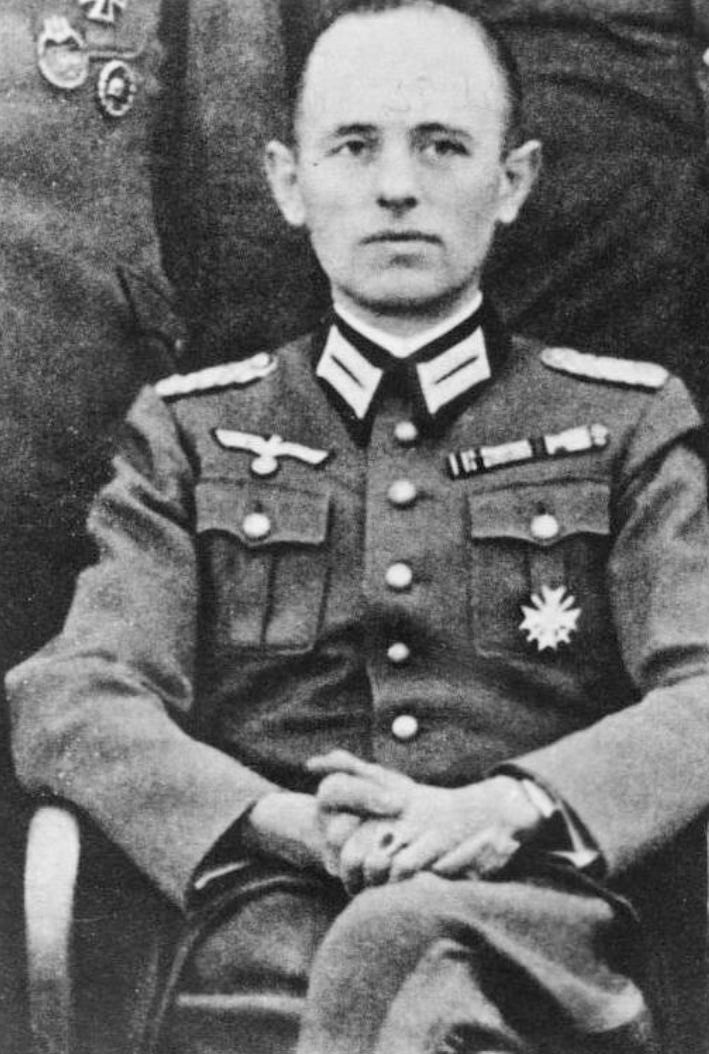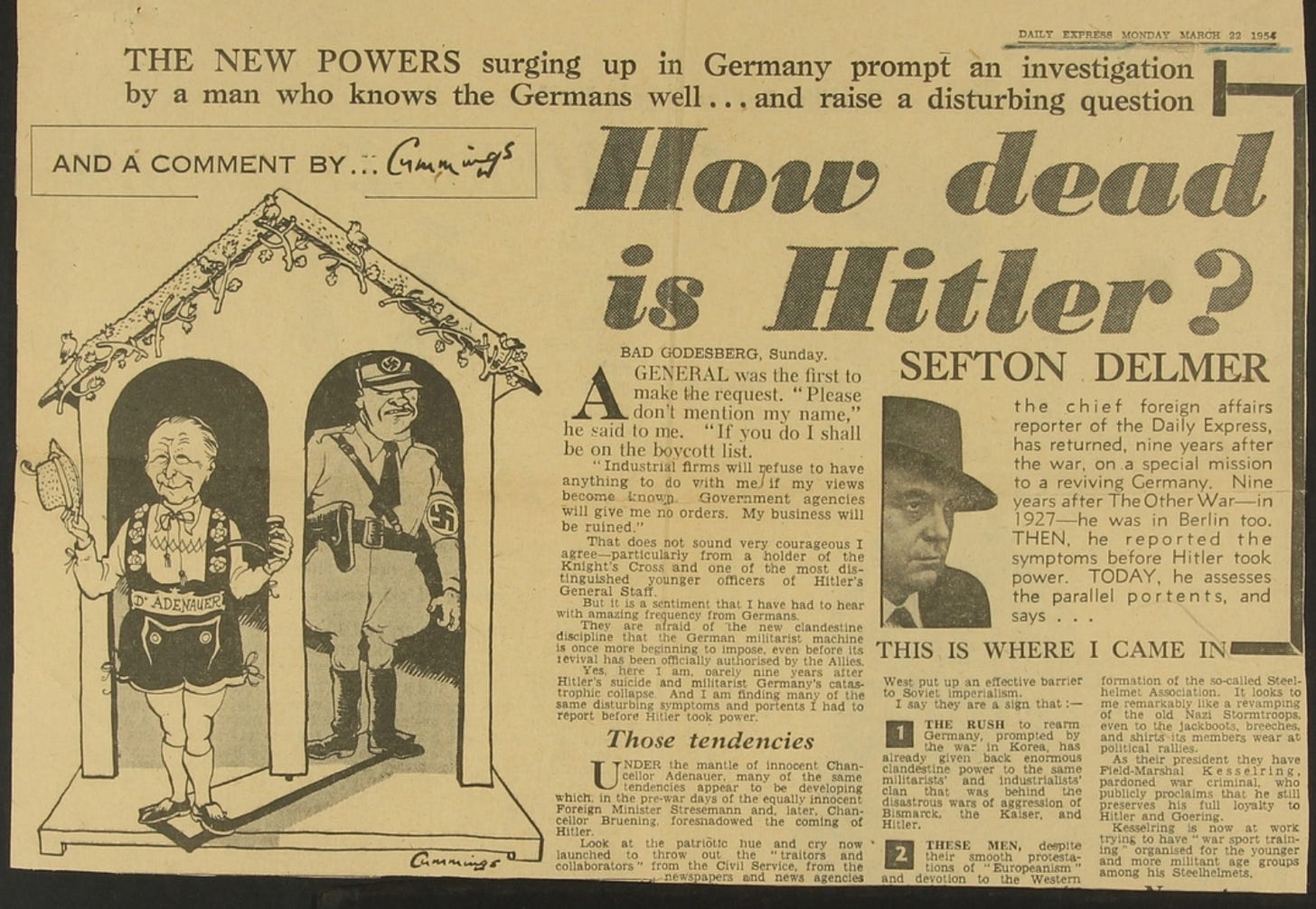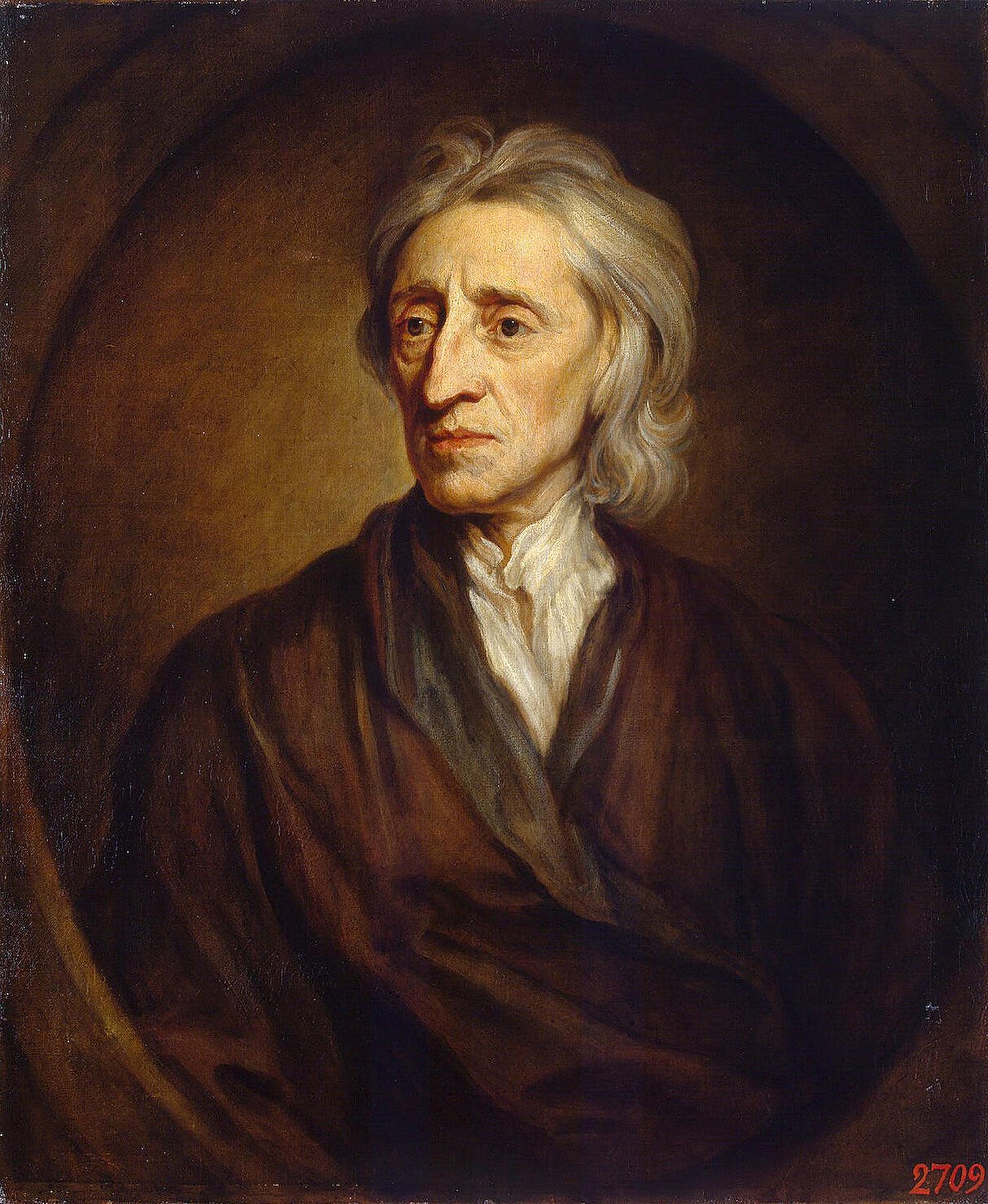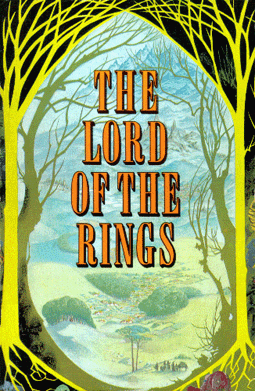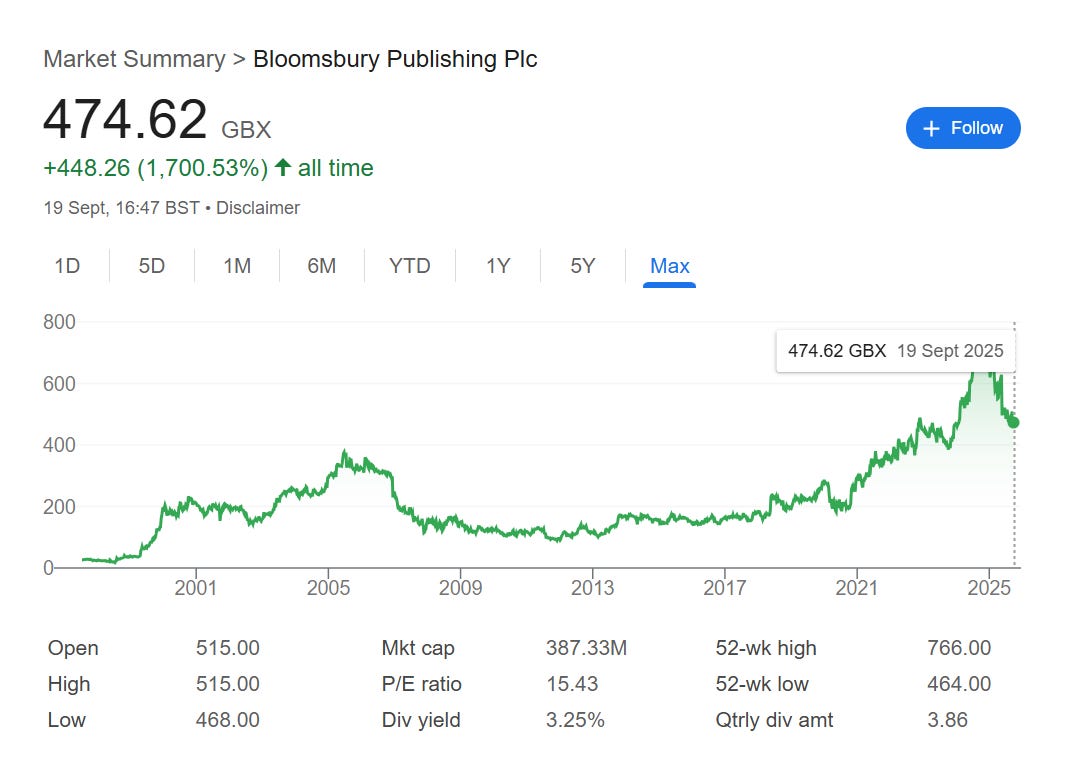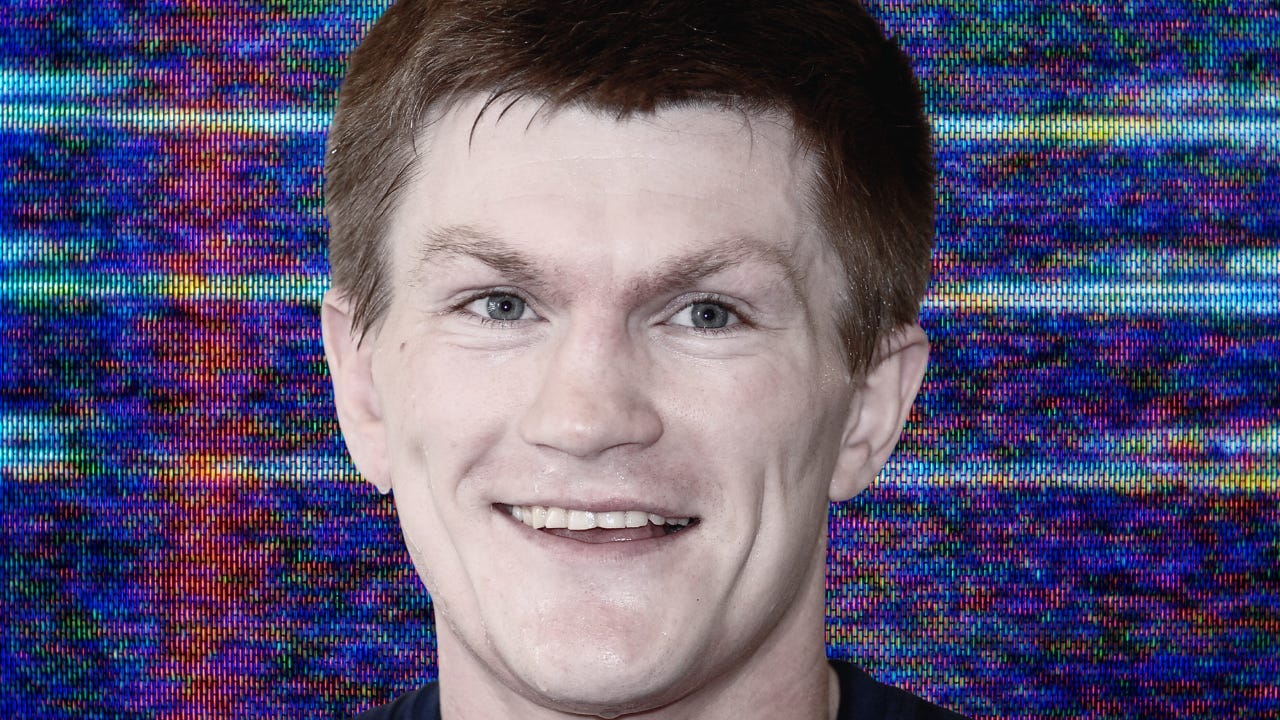The Shadow General, The Press Baron and The CIA - a Cold War Story
How The Daily Express went to war with two intelligence services, enraged Winston Churchill and found itself in the middle of an international spy scandal
A new world was created in the 1950s and we are still discovering how it was really formed today. If anything else, this story should give you a sense of the powers at play and the high stakes which had to be navigated at the start of what we now call the Cold War.
Autumn, 1954. Around 50 miles from Fleet Street and deep within the English countryside, an old Berliner was reflecting on the latest international embarrassment he had caused.
The man in question was Sefton Delmer, The Daily Express’ star foreign correspondent, who had based himself in a farmhouse on the Essex-Suffolk border. It was his home away from the day-job, which had seen him cause most mischief in Spain, France and Germany.
Born in Berlin to an Australian academic, Delmer was repatriated to England during the First World War, he went up to Lincoln College, Oxford, and then returned to Germany as a freelance reporter.
As the Great Depression killed off the Weimar Republic and triggered street battles between the fascists and communists, Delmer got close to Ernst Röhm, the co-founder of the SA, the Nazi Party’s first paramilitary wing.
This relationship bore fruit when Delmer was the first English-language journalist to interview Adolf Hitler. He later reported on another and more sinister encounter with Hitler and Hermann Göring.
The Nazi chiefs paraded around the fire-bombed Reichstag Parliament building in February 1933. Warning of the evils of Bolshevism, they would use the incident to extend their powers, crackdown on opposition parties and ultimately take control of Germany.
As for Delmer’s old contact, Ernst Röhm, he would be executed more than a year later as part of the Night of the Long Knives, the SS purge of the ‘Brownshirts’.
It may have been a very ugly business during an extremely turbulent time, but Delmer’s initial relationship with the Nazis was the type of world-beating access Lord Beaverbrook wanted.
By the early 1930s his Daily Express had reached a circulation of two million copies, with the paper and its proprietor wielding a growing influence over domestic and international politics.
More scoops were needed to satisfy his paper’s hungry readership and Delmer would be dispatched by legendary editor Arthur Christiansen to cover the Spanish Civil War.
From apparent relative safety, Delmer would try to extract stories from Royal Navy men by appearing half-drunk in the port towns (link). He would turn their tales into his own.
In Madrid, Delmer would get scooped by Geoffrey Cox, of The News Chronicle, who first reported on British volunteers flocking to The International Brigade – a writer called Eric Blair being one of them (link).
We don’t know if Delmer rubbed shoulders with Ernest Hemingway, but the pair were almost certainly in Spain at the same time.
That conflict, arguably the first foray into modern warfare, was the dress rehearsal for what came next. And what came next was when Nazi Germany attacked Poland in September 1939.
Delmer would cover the invasion and then the Wehrmacht’s march Westwards before returning to England in 1940.
After stints with the BBC broadcasting from London into Germany, the Secret Service-linked Political Warfare Executive would pick Delmer up. He would establish a black propaganda unit on the outskirts of Milton Keynes, part of a wider area dubbed ‘The Country’ which included Bletchley Park.
A frequent visitor to Delmer’s residence at Aspley Guise was James Bond author Ian Fleming, the right-hand-man of Rear Admiral John Godfrey, the Director of Naval Intelligence (The Royal Navy being Britain’s senior military arm).
Fleming, who was nearly blown up alongside Delmer (link), shared top secret information with the journalist-turned-propagandist. In turn, Delmer and his team carefully used this prized information in broadcasts, in print and as part of elaborate forgery schemes.
A favourite technique was to slip in two believable rumours per-day into German-language news broadcasts. The goal? To confuse, upset and destroy enemy morale.
Sometimes Delmer and his shadowy unit had too much fun. They found themselves under scrutiny after placing a story in the national press that the government was planning to import man-eating sharks from Australia in a bid to deter any invaders from across the English Channel (link).
Delmer’s propaganda escapades deserve a treatment of their own, something which the newsman provided in his Black Boomerang book. But for our purposes, focusing on the troubles of the 1950s, we should be most interested in who joined Delmer’s team and what impact they had on the world stage in years and decades to come.
The Trouble From Marburg
November, 1943. You could see the beginning of the end for the Axis Powers as 1943 came to a close. The Germans and Italians had been forced out of North Africa, there were substantial gains for the Soviets on the Eastern Front and the Allies had a foothold in Italy.
The ‘Three Big Powers’ subsequently held a meeting in Tehran to decide on several issues which could end the war, especially in the European theatre.
Franklin D. Roosevelt and Winston Churchill agree to open-up a second front with the Germans, drawing manpower and munitions away from the East. The leaders also decide to demand an unconditional surrender from their enemies. This latter point was a blow for the German resistance.
Since at least 1942 the anti-Hitler movement, including trade unionists, left-wing politicians, Christian leaders and disaffected military men, had attempted to keep in contact with the Allies via their agents in Spain and Portugal.
The two Iberian nations were technically neutral during the conflict, but they definitely picked sides – the old alliance between Britain and Portugal remained, while Fascist Spain favoured the Nazis.
This meant that Spain and Portugal became important intelligence hubs, a situation which the Abwehr, the German military intelligence service, sought to exploit by trying to cut deals with the US and British intelligence services (link).
Admiral Wilhelm Canaris, who led the service, even made several trips to Spain of his own. It wasn’t until the 1960s when we started to find out why he and his successor, Colonel Georg Hansen, didn’t get as far as they wanted. In short, the German resistance was taken entirely seriously (link). But by who exactly?
Historian Hugh Trevor-Roper, who was part of MI6 during the war, laid the blame at the feet of Soviet double-agent Kim Philby (link), who was his boss at the time and, as the records at the National Archives show, dismissed the German resistance reports as “speculation” or “unreliable”.
As for his duplicity impacting the Iberian connection, Philby was also reportedly able to suppress a report from a Lufthansa lawyer that there was a serious plot afoot to assassinate Hitler in the summer of 1944.
This was the unsuccessful suitcase bomb attempt at the Wolf’s Lair on the 20th of July 1944. The attack, which came a month after the Allied invasion of Normandy, was masterminded by Claus von Stauffenberg and part of the wider Operation Valkyrie.
That lawyer was Otto John and he was an agent of both the Abwehr and MI6. He was codenamed ‘WHISKY’, owing to his penchant for hard liquor, a fact which we will return to later.
After the attempt on Hitler’s life failed and his co-conspirators, including his younger brother, Hans, began to be rounded up, John made a dash for Spain on the 24th of July. According to his own contested account, John used his Lufthansa credentials and signed onto a flight manifest as a mechanic.
The Gestapo were hot on his heels and John had to lay-low in Madrid and then Lisbon before Lord Templewood, the British Ambassador to Spain, made an intervention to make sure the Security Services scooped him up.
By November 1944 John had finally made it to England and after being interned briefly as a prisoner of war (PoW), one of his first requirements was to be interviewed by Delmer, who was looking for new recruits.
John, who had originally hailed from the Hessian city of Marburg, was taken on by the Political War Executive at a wage of just under £12 per week, with free board and lodging at ‘The Rookery’ in Aspley Guise.
The German worked on the infamous Soldatensender Calais or Soldiers’ Radio Calais station, which operated until April 1945 and targeted Wehrmacht soldiers in France as well as U-boat crews operating in the English Channel and North Sea.
After the war, Delmer said that the broadcasts made some U-boat crews surrender early. But there is currently no evidence to support this claim.
A Treacherous Game
May, 1945. Most historical accounts of the Second World War would have you believe that the defeated German forces, represented by General Alfred Jodl, Chief of Staff of the German Army, signed an unconditional surrender to the Allies during the early hours of Monday 7th of May.
That is true. But, contrary to the agreement at the Tehran Conference and popular belief, some more bespoke deals were also brokered by Axis officials in the months after Germany’s official surrender.
One which we are still understanding the full depth and scope of today is that of Abwehr General and Soviet expert Reinhard Gehlen and his staff. The Americans would call this Operation Rusty. But before we get into its details, there is some important context to cover.
From 1944 onwards there were shifting priorities both amongst the Axis and Allied powers. The German officer corps increasingly understood that defeat was inevitable, with Gehlen planning a leave-behind model of his own based on the Polish resistance (link).
Heinrich Himmler, deeming this to be too defeatist, dismissed the idea and rebuked Gehlen. The equally stubborn and delusional Hitler effectively fired Gehlen, who was warning of mounting Soviet attacks, in April 1945.
The most devout Nazis wanted the German people to lay down their lives before surrendering to the Allied powers, a grizzly factor which made the Battle of Berlin so bloody.
The US and the UK, meanwhile, were increasingly worried about the threat from the Soviet Union after the war.
With these considerations in mind, and facing torture and death from Stalin’s forces, Gehlen collected some of his most important intelligence files in Berlin and fled to the Bavarian mountains, where his men literally buried secrets and waited for the Americans.
Gehlen would use these files, which included important battle order information of the Soviet forces and a working knowledge of Bolshevik intelligence networks, as a bargaining chip after he surrendered to the US Army.
After understanding the true size of their catch, the Americans first sent Gehlen to the 12th Army Group Interrogation Centre in Wiesbaden in June 1945, and then on to Fort Hunt in Virginia in August. This was where some of the Ritchie Boys, German-speaking Jewish refugees, operated and where the US housed and interrogated high-value PoWs.
By all accounts, including oral histories of Fort Hunt released only in the past decade (link), Gehlen was given preferential treatment and he wielded his officer-status over his captors. Such was his comfort, Gehlen and his staff allegedly nicknamed the compound as ‘Truman’s Hotel’, the outside world only knew it as PO Box 1142.
Gehlen’s debriefs would help the Allies understand how the Abwehr was organised, especially on the Eastern Front, and the true threat from the Soviets.
Back in Germany, the country was continuing to be divided up between the Allied forces. Despite falling within the Soviet zone, Berlin was split into four areas controlled by the US, Britain, France and the Soviet Union.
Refugee camps had also sprang up across the country, with tens of thousands of destitute Germans and Eastern Europeans turning to black markets and selling their secrets to the highest bidder in order to make ends meet.
James Critchfield, who served as lead liaison officer between the CIA and Gehlen, described post-war Germany as an “intelligence jungle”. There were emigree networks, there were private intelligence operations and the Allied forces had their own, often competing, initiatives.
And though some agents were ideologically tied to the new battle between capitalism and communism, financial gains drove others. All in all, it was a knotty and dangerous landscape, one which the Americans somewhat reluctantly turned to Gehlen and his team to help navigate.
The Service
Summer, 1946. Initially sponsored by the US Army, Gehlen would return to Germany by July 1946 and start re-establishing himself. His team made an immediate impact, claiming that they had formed a network of more than 600 agents within the Soviet zone of Germany by October 1946.
The US was fixated on the Russian order of battle, with Pentagon planners wanting to avoid any nasty surprises from the East. The pressure was on Gehlen and his team to deliver more and more military intelligence, but the funding for this ballooning operation was quickly running out.
In his memoirs The Service, Gehlen moaned that he was forced to establish a black market operation to pay for his enterprise:
“I set up a special section for raising the funds we needed to continue. With the $125,000 that remained to us, we purchased as much cocoa as we could from American stocks, and sold it around Munich—particularly in the notorious Mohlstrasse black market area—at a profit so large that we more than tripled our original outlay.
“If our operatives were caught, their special American passes provided for their immediate release. The American authorities connived wholeheartedly in this, as they had no option.”
Widespread illicit behaviour like this and inflationary pressures on the Reichsmark forced the Allies to introduce the Deutsche Mark in the Western occupied zones of Germany in June 1948. The same month the Berlin Blockade began, mounting more pressure on Gehlen and his sponsors.
The Americans still didn’t know what to do with the General. He had clashed with US Army officers, Operation Rusty had become increasingly expensive, but, at the same time, the West had to face up to the realities of a new conflict, the start of the Cold War.
After many bureaucratic battles in Washington and Virginia, the US Army was able to slowly and suddenly offload the Gehlen Organisation to the nascent CIA, which was formed in September 1947 by absorbing elements of the US’ wartime intelligence apparatus, including the Office of Strategic Services, the Strategic Services Unit and the Central Intelligence Group.
The aforementioned James Critchfield, then a young combat veteran who had served in military intelligence and joined the CIA in 1948, was asked to survey Gehlen’s operation.
He produced an extensive report, ultimately concluding that the spy network should be continued to be used by the American authorities in some capacity:
“...RUSTY is a re-established GIS [German Intelligence Service] which has been sponsored by the present de facto national government of Germany, i.e. by the military occupational forces.
Because the 4,000 or more Germans who comprise RUSTY constitute a going concern in the intelligence field, it appears highly probable that RUSTY will emerge as a strong influence, if not the dominant one, in the new GIS.
Another important consideration is that RUSTY has closest ties with ex-German General Staff officers throughout Germany. If. in the future, Germany is to play any role in a Western European military alliance, this is an important factor.”
The Agency would assume control of the Gehlen Organisation in 1949.
At the same time, Otto John was making himself unpopular. Beyond his growing reputation for womanising and boozing, John had moved on from interrogating German generals in the Kensington cage and attempted to establish a legal practice in the UK only to face financial hardships.
He then turned to his old sponsors, the British, who put him on the staff of the prosecutors at the Nuremberg trials as part of the Allied War Crimes Commission.
Though the Nazi war machine is rightfully seen as evil today, questions of patriotism and treachery were still very much on the mind of most Germans after the war. This was a sore spot which John pressed on during the trial of General Erich von Manstein in Hamburg in 1949.
Though von Manstein was found guilty of war crimes and handed a sentence of 18 years imprisonment, the Field Marshal was a popular figure within German military circles and their consensus was that he was given a raw deal, partly because John apparently twisted the facts of von Manstein’s case towards the Allies’ favour.
John would then bounce between Germany and Britain, where he failed to secure citizenship. Pulling from his old socialist resistance contact book, John would tap up Jakob Kaiser, a trade union leader turned West German minister, for a job.
Though he would turn the role of a foreign minister down, John eventually found himself in the running to become the head of West Germany’s domestic intelligence service, the Office for the Protection of the Constitution (BfV).
The organisation was a cross between the US’ FBI and the UK’s Scotland Yard. It was part of a new network of federal institutions which emerged as Western Germany found its feet again and sought to re-establish itself in the international community.
But despite the apparent prestige of the role, nobody wanted to head-up the BfV. The French, Americans and British exhausted a list of candidates before alighting on John.
Beyond Kaiser’s endorsement, Sir Ivone Kirkpatrick, the British High Commissioner in West Germany, also apparently pushed for John’s appointment after an endorsement from John Wheeler-Bennett, who worked with John in the Political Warfare Executive and on the Allied War Crimes Commission.
In November 1950 and at the age of 41 John was installed as President of the BfV, overseeing the future security of West Germany. It didn’t go to plan.
Old Friends, New Tricks
October, 1951. The state of war between Germany and some of the Allied powers had officially come to an end near the end of 1951, but there were still existential issues to face up to for West Germany and its new allies.
Though the new nation’s economic fortunes were improving, the Federal Republic was facing a multitude of threats on many sides.
Those included its unruly neighbour to the East, the Soviet-backed German Democratic Republic, the ongoing war in Korean and the secret formation of post-Nazi networks (link), many of which relied on the support of German colonies in South America and operatives in Spain.
It wasn’t all bad news though, Winston Churchill, the original Cold War warrior, was back in Downing Street after the Labour Party blew its post-war popularity through economic incompetence and infighting.
The man who had prophesied an ‘Iron Curtain’ descending across the continent was in the driving seat once again to push for European unity in the face of an embolden Soviet Union.
Unlike Clement Attlee’s government, which opposed the rearmament of West Germany, Churchill showed some support for the idea, ultimately and initially backing the creation of a European Defence Community (EDC).
As Britain was still on rations and much of Western Europe was still trying to recover from the war (the Marshall Plan being enacted in 1948), this issue was a thorny one.
But the EDC plan gave European leaders wriggle room: West Germany would be rearmed but only as part of a European army. The new menace from the East could be countered, while the old menace would be muzzled.
Politically, it was the equivalent of threading the needle, but, as ever, Churchill was willing to put his reputation on the line for the scheme. Lord Beaverbrook and The Daily Express, meanwhile, remain unconvinced.
In protest against Britain joining a European Common Market, and by extension other European supra-national organisations, Beaverbrook shackled his English Crusader mascot in chains so that every front page of the Express would make the paper’s position clear.
For Beaverbrook, Churchill had wrongly given up on the British Empire. But Churchill knew that the US was now the world’s super-power, whether patriotic Brits liked it or not. And the Soviet threat should be taken seriously, something he had accused Attlee of failing to do when the pair clashed in the House of Commons (link):
“We have a great deal of information about the military expenditure of other countries, including the vast expenditure by Russia and the preparations that country is making behind their smokescreen of peace propaganda.
“I am not going to reveal to the world how much we know, except to say that we know a great deal. It is, however, certain that the defence expenditure of Russia alone is not less than 13 per cent. of her national income.
“She maintains an army of some 175 active divisions of which one-third are mechanised and tank divisions comprising about 25,000 tanks. Of these an appreciable number are at immediate readiness in the Soviet Zone of Germany. She has 2,800,000 men under arms and could double this number on mobilisation.
“This force is backed by about 19,000 military aircraft including jet aircraft of the latest design, both bombers and fighters. She has considerable naval forces, which include strong submarine fleets, many of them of modern design.”
But despite these comments before coming into power, Churchill’s enthusiasm for the EDC would wane. Ultimately, the idea had been captured by European federalists and the Prime Minister wanted to keep Britain allied to Europe but not married to its political projects.
Instead, Churchill and other Western leaders backed the idea of expanding NATO’s role, which was effectively dormant until the Korean War kicked-off.
One important action from NATO in 1951 was the formation of the Supreme Headquarters Allied Powers Europe. This organisation brought European forces together and standardised military equipment, especially ammunition.
The Opportunists
It was an extremely sensitive and tense time, something which the Soviets sought to take advantage of. In Germany they would consistently call for a unification between the Western and the Eastern zones, whilst accusing the US, France and Britain of being motivated by imperialism.
By mid-1951 the MGB (later known as the KGB) started to exert its own power and influence over West Germany by blackmailing old Nazis, establishing intelligence networks and attempting to infiltrate the new nation’s intelligence services.
Targets included the BfV and the Gehlen Organisation, which wasn’t fully absorbed into the Federal Republic until 1956 as the Bundesnachrichtendienst or the BND.
The Reds, who had been in power since the early 1920s, were able to play the long game. Gehlen, in contrast, was establishing himself, while the CIA were very much the new boys on the block when it came to the foreign intelligence world.
The British had some pedigree, especially in disrupting and infiltrating Axis intelligence services, but that reputation was severely dented when Guy Burgess and Donald Maclean defected to the Soviet Union in 1951. Philby, who was the chief British intelligence liaison to Washington, was forced to resign in July of that year.
The Russian bear had started to sharpen its claws, but the West was able to fight back thanks to a codebreaking operation known as the VENONA intercepts. Amongst other traitors, it helped expose the atomic spy Klaus Fuchs (link).
It was in this atmosphere of suspicion that The Daily Express and Delmer decided to blow the cover of the Gehlen Organisation and its association with the US. In a March 1952 exclusive, the British newspaper warned that “Hitler’s general now spies for dollars”.
For the Western powers and especially the CIA, the exposé was less than helpful. Gehlen later complained that the report was “sensationalist”, and he reached out to several journalists in a bid to “set the record straight”.
“Out of these early talks emerged a regular policy of the organization (and later of the Federal Intelligence Service) of collaborating with selected representatives of the press and other media,” Gehlen revealed.
It must have been a big surprise for the General’s neighbours too. Until then, Gehlen was solely known as a successful businessman who lived by Lake Starnberg and drove to work in a Mercedes 220, rather than a spymaster operating on the outskirts of Munich.
Needless to say, Delmer’s scoop put him on the radar of a few interested parties. That scrutiny only compounded over the course of the early 1950s.
Reds Under The Bed
1953. The spy game between the East and the West again ramped-up. The British and Americans later learned that MI6 officer George Blake was turned by the Soviets in 1953. The Cambridge man exposed the existence of Operation Gold, the building of the Berlin Tunnel, alongside 400 subagents.
At the same time the Reds apparently used Wolfgang Gans zu Putlitz, an old colleague of Delmer’s and John’s, in a bid to get closer to the BfV boss. Gans zu Putlitz was an assistant at Soldatensender Calais during the war and eventually relocated to East Germany in 1952.
Though MI6 warned John that his old friend was now “in the other camp”, the pair still had lunch. For Delmer and The Express though, they were most interested in stories about the apparent return of the Third Reich.
It seems far-fetched now, but there was some evidence to support their ‘Nazi return’ claims. One of the biggest stories of 1953 was the exposure of The Naumann Circle.
Led by Werner Naumann, the last State Secretary of Propaganda for the Third Reich, this underground movement had formed around 1951 and planned to gain influence by infiltrating new political parties, most notably the Free Democratic Party.
According to the CIA’s own sources (link), the West German government did know of the neo-Nazi group’s existence, but decided not to break up the ring. The British authorities, however, took a different view and Sir Ivone Kirkpatrick ordered Naumann’s arrest (link).
Delmer and The Express turned the episode into a cause celebre. During the trial it was revealed that British fascist leader Oswald Mosley had helped finance the group (link).
But despite the newspapers’ stark warnings and prosecutors claiming that Naumann had intended to take control of the West German Republic, the Führerbunker survivor walked free once again. Naturally, The Express called foul on the West German judiciary.
By the end of 1953, Stalin was dead, a power struggle had been triggered amongst the Soviet leadership, two uprisings – the first in Czechoslovakia, the second in East Germany – had been put down and the Reds had tested their own hydrogen bomb in the Kazakh Republic.
Elsewhere, Fidel Castro’s first attempt at overthrowing Cuban dictator Fulgencio Batista had failed, while Western intelligence services were able to restore Mohammad Reza Pahlavi to power as the Shah of Iran.
As 1954 loomed, Nikita Khrushchev slowly emerged as the new Soviet boss and Churchill wanted President Eisenhower to push for peace, whilst increasing cooperation between the US and the UK on nuclear energy (link).
In spite of his failing health due to a severe stroke earlier that year, the British Prime Minister met Eisenhower and the French Premier Premier Joseph Laniel in Bermuda in December 1953.
Ultimately, Churchill’s face-to-face approach failed, he couldn’t convince Eisenhower to meet with Khrushchev (link). The Cold War continued but there was a move towards détente at the start of the new year when the ‘Big Four’ powers, including the US, the UK, France and the Soviet Union, met at the Berlin Conference.
Though little progress was made at the summit, the countries did agree to hold future conferences in a bid to seek peace in Korea and Indochina, with the subsequent Geneva Conference achieving a temporary relaxation in that conflict.
As for the future of Germany, the Western countries called for free and fair elections in the East, while Soviet Foreign Minister Vyacheslav Molotov claimed that war reparations should be cancelled across the country.
Regardless, West Germany’s slow and contested integration into the European community continued, as did The Express’ attacks on the integrity of the Republic’s institutions.
Delmer reheated the Gehlen and Naumann cases in March 1954 as a part of a series of articles on West Germany, with his claims of growing militarism meeting some scepticism in the Houses of Parliament (link).
But it was Delmer’s interview with Gans zu Putlitz, which was also published that month, which caused The Express man most trouble after catching the attention of the British authorities.
The aristocrat was a signed-up socialist by then and his association with Guy Burgess was most likely known within intelligence circles (link). As we have already noted, Gans zu Putlitz had met Otto John in the prior year and now he was going public with his anti-Western propaganda through Delmer.
It was now clear who The Express’ star source come fixer was in Western Germany. But the worse was yet to come for Delmer and his friends.
Twice Through The Lines
July, 1954: Following an official trip to the US where he was given a tour of the FBI and the CIA headquarters, John returned to Germany, flew to Berlin and disappeared. He was last seen at a ceremony to mark the 10th anniversary of the failed plot to kill Hitler on the 20th of July.
At the morning Joint Intelligence Committee meeting in Whitehall on the 22nd of July, British spymasters noted that John was spotted leaving the event in a taxi and they suggested the head of the BfV had defected to the Soviets.
“John was known to have had a number of meetings with a German who had himself had contacts with the Russians,” Roger Hollis, of MI5, noted.
That mystery was partly solved when John soon appeared in East Berlin, where he broadcast his dissatisfaction with the alleged rise of militarism and Nazism in West Germany. He also called for the reunification of his country.
It was a propaganda victory for the Soviets. A Western intelligence chief was now actively undermining the goals of the Atlantic alliance. The remarkable development was also fortuitous for Gehlen and his organisation. The pair had previously clashed, but now the BfV faced a crisis of confidence.
Reflecting on the incident in his memoirs, Gehlen stuck the knife in:
“John broadcast over the radio the favorite Communist lie that my organisation was carrying out espionage against France, and suggested that West Germany was on the threshold of a new Nazi revival.
He seems to have regarded me as his great rival for the role of Adenauer’s Canaris; unfortunately, Dr. John was inclined to see all his real friends as enemies and—far more dangerously—vice versa.”
But Gehlen stressed that his organisation had nothing to do with the defection. So who did?
When John later held a press conference in August 1954, one which Delmer was able to attend, he claimed that he had crossed willingly into East Germany.
John would attempt to radically change this version of events in just a year’s time, but until then his old friend Delmer would face his own troubles. From at least September 1954 British intelligence discovered that the Gehlen Organisation was keeping tabs on the newspaperman.
The Secret Service picked-up traffic which indicated that the West Germans knew that Delmer was seeking a farmhand at Lamarsh and such knowledge could allow them to plant their own spy into Delmer’s family home. Ex-Abwehr officer Hermann Giskes was at the centre of the plot.
Delmer had exposed Giskes’ post-war involvement in the Gehlen Organisation as part of his Express coverage. It is not clear what came from Giskes’ efforts, but the counter-intelligence expert is better known nowadays for his involvement in Operation North Pole, which resulted in the capture of more than 50 British SOE agents during the war. The radio hoax substantially undermined the Dutch resistance.
It wasn’t just the Germans who were interested in Delmer, Churchill also wanted the British Security Service to investigate him. Downing Street sent a minute to MI5 in October 1954 asking that they make delicate enquiries into Delmer’s alleged “communist sympathies”.
An answer came back to the Prime Minister in November. Delmer wasn’t considered a communist, but he was anti-American and very critical of the UK’s “fumbling” foreign policy, MI5 said.
Given that the source was “reliable and well-placed”, with a sub-source on The Daily Express, there is a very good chance that Chapman Pincher, the paper’s defence correspondent, may have vouched for Delmer. Pincher had a strong relationship with the intelligence services, a factor we will return to later.
The heat eventually died down for Delmer and he continued to report on the brave new world forming around him in the wake of the Second World War. By mid-1955 there was more certainty for West Germany as the nation joined NATO, started to rearm and was formerly recognised by the United States, France and the UK.
Gehlen was also no doubt delighted when it was announced in July that the West German government would takeover and fund his organisation. The agency had swelled to a staff of 3,000 personnel.
Gehlen was a long way from Virginia now, but he never forgot his friends in America. The CIA continued to have a close relationship with the organisation, which provided a stream of intelligence from Eastern Europe.
By the end of 1955, Otto John had returned to the scene. According to his own account, John had made a daring escape from the East by leaving his guards to overwatch a briefcase full of money.
With the Soviet heavies distracted, he then navigated through museum and university grounds and eventually jumped in the car of Danish journalist Henrik Bonde-Henriksen (link). The pair then drove to West Germany.
John was initially held for psychiatric examination and then placed into custody until his trial in November 1956. His old friend Delmer covered the case as John pleaded his innocence.
The former BfV chief claimed that Dr. Wolfgang Wohlgemuth, an old family friend who MI6 had warned him of (the German with Russian connections), had drugged his coffee and kidnapped him.
Once in East Berlin, the KGB then took John to Moscow to interrogate him and the Soviets coerced him into publicly repudiating the West.
Despite his protests, John was found guilty of treason in December 1956 (link), the presiding judge noting how quickly John cooperated with the Soviet forces.
He was sentenced to four years of imprisonment, but was released in July 1958, some 14 years after the 20th of July plot, and pardoned by West German President Theodor Heuss.
Just a year later Beaverbrook would sack Delmer from The Express, the old man was apparently bored of Delmer’s high expenses and increasingly low-quality stories.
Delmer would continue to write for other papers, including The Sunday Telegraph, but his dismissal also gave him an opportunity to semi-retire back to the countryside, where he wrote his two autobiographies, Trial Sinister (1961) and Black Boomerang (1962).
Pincher, meanwhile, was able to get John’s own memoirs cleared by the British authorities, but they wouldn’t be published in English until 1972. By then the scale of the KGB’s infiltration into Western intelligence services was partly exposed.
The Gehlen Organisation had been compromised early on. As just one example, Heinz Felfe was blackmailed into becoming a Soviet spy in 1949. Felfe did not want his past SS membership to become public.
The British had dropped him in 1950 for serious operational and personal security reasons, but Gehlen recruited Felfe in November 1951. He was arrested a decade later.
A meaty damage assessment report produced by the CIA outlined the impact of Felfe’s treachery (link):
“From June 1959 until his arrest on 6 November 1961 Heinz FELFE was the most knowledgeable of all BND officials on CIA operations against the Soviet targets in East and West Germany.
“With already some 8 years of experience as a KGB penetration of the BND, considerably more as a counter-intelligence officer, and a high degree of native intelligence and cunning, the KGB could only have evaluated his agent performance from that date as of the highest calibre.
“From the time of his entry on duty with the BND in November 1951, FELFE began to build with KGB assistance a reputation within the German Service as a Soviet operations expert.
“This reputation grew as he rose in BND ranks until he was able to so deeply ingratiate himself with the BND that he attained a position whereby he could initiate, direct, or halt any BND operations and later some of CIA’s to the ultimate advantage of the Soviets.”
Felfe’s role partly explained why the joint operations between the BND, CIA and MI6 went awry in Eastern Europe, most notably during the guerrilla war in the Baltic states, where the Soviets were able to get one step ahead of resistance movements and eventually snuff them out.
Though Western intelligence did suspect something was wrong by 1951, and later ingeniously proved it by requesting a sample of radioactive water from their commandos (the KGB overdid the dosage), they wrongly suspected that the Reds had just been able to infiltrate a group of ‘Forest Brothers’ in Latvia. In reality, the Soviets had near full coverage of these operations.
Ultimately, Delmer’s and John’s concerns that the Nazis would return were misplaced, but they were right in claiming that the Western powers were turning a blind eye to them.
For his part, Gehlen retired from the BND in 1968 and soon afterwards published his memoirs. He was able to celebrate his 70th birthday with his old friend James Critchfield in 1972.
For Otto John it wasn’t a happy ending, he continued to declare his innocence until his death in 1997.
Postscript
Bolivia, 1983. It was now a matter of time before the ‘Butcher of Lyon’ would be forced back to France. Nazi hunter and journalist Beate Klarsfeld had discovered Klaus Barbie living under an assumed name, Klaus Altmann, in Laz Paz in January 1972.
Though the former Gestapo officer was exposed, he had the backing of the Bolivian government. The South American nation had a long history of coups and military dictatorships, something which Nazi fugitives like Barbie took advantage of after the war.
But Bolivia took an important turn towards freedom in 1982 when the regime was ousted and the country’s Congress voted Hernán Siles Zuazo back into power (link). For torture-loving Barbie, who sent children to gas chambers and murdered many others, his time was nearly up.
Zuazo’s government arrested the unrepentant Nazi in February 1983 and handed him over to France. A trial and conviction would follow later, but Barbie’s capture also prompted some hand-wringing amongst the Western powers before a conviction of life imprisonment was handed down.
Rumours had long swirled that Barbie was able to escape to South America after the war because of an intervention from the CIA. In reality, the US Department of Justice discovered (link) that the Army’s Counter Intelligence Corps (CIC), effectively a forerunner to the CIA, had smuggled Barbie out of post-war Germany. This was after the Nazi served as an anti-communist informant for them.
The Americans knew the German and French authorities were closing in on Barbie so they paid a Vatican-linked priest, Father Krunoslav Krunoslav Draganović, to use his well-established rat-line.
A Croatian fascist (link), Draganović was extremely well connected, including with the Italian authorities, and he was subsequently able to procure an immigration visa for Bolivia and a travel permit from the International Committee of the Red Cross for Barbie’s family.
After being smuggled through Austria to the Italian port city of Genoa, Barbie sailed to a new life in South America in March 1951. He would later work for Gehlen and the BND.
It was this story and the wider Nazi hunts of the 1970s and 1980s which reinvigorated a public debate about the Allies conduct after the Second World War.
In 1987 left-wing writer Carl Oglesby unsuccessfully sued the CIA for information about the agency’s relationship with Gehlen, while James Critchfield went public in the 1990s to share his own story (link).
In October 1998 President Bill Clinton signed the Nazi War Crimes Disclosure Act into law. For the first time, the legislation mandated the declassification and release of US government records related to Nazi war crimes and criminals.
In the UK, MI6’s records remain shut. But MI5 documents, Secret Service memoirs and oral histories have given us a glimpse of what was really going on at the start of the Cold War.
The Political Press Box
Find my latest long-form audio interviews of political communicators here. Please like, subscribe and listen.
📧 Contact
For high-praise, tips or gripes, please contact the editor at iansilvera@gmail.com or via BlueSky (link). Follow on LinkedIn here.
221 can be found here
220 can be found here
219 can be found here
218 can be found here
217 can be found here


